Back to (Nature) School
photo by Ann Blanchard.
Healthy forests support healthy communities well beyond our environmental health. Empirical evidence is stacking up showing access to nature is imperative for our physical, mental, and social health too. While protecting and restoring redwood forests at the doorstep of millions of San Francisco Bay Area residents for people and wildlife to enjoy is a critical step, the next is ensuring everyone has access and feels welcome in nature is crucial so redwoods and people can thrive together. So, we spoke with educators in the community who work to overcome barriers to accessing nature and offer resources to help everyone connect with nature in the Santa Cruz mountains no matter where they are.
Like our partners the Y of San Francisco on our recent work to protect nearly 1,000 acres at Camp Jones Gulch which has provided youth with access to the outdoors for generations, Chris Soriano, Education Coordinator at Santa Cruz Museum of Natural History, also cites transportation as the number one barrier to youth experiencing the outdoors. Transportation has always been a costly and challenging barrier to overcome, and as gas prices and traffic increase, the hurdle becomes all the larger. Chris says while Santa Cruz Museum of Natural History is actively exploring ways to overcome the costly and complicated barrier of transportation, which prevents many from experiencing nature, they have been able to make their wildly popular outdoor education and experiences more accessible to everyone by offering programs for all ages, scholarships to cover the cost of some programs, and many free and online resources as well.
For nearly as long as Sempervirens Fund has been protecting the awe-inspiring redwood forests of the Santa Cruz mountains (since 1900), Santa Cruz Museum of Natural History has been connecting people to the wonders of nature like them (since 1905). Where these century-long parallels truly intersect is at stewardship. A community hub for science education for all ages, the museum’s official mission is “connecting people with nature and science to inspire stewardship of the natural world”. Being the oldest museum in Santa Cruz, people are often pleasantly surprised at the museum’s plethora of programs, events, and interactive exhibits Executive Director Felicia Van Stolk said. After helping to expand the museum's offerings to better encompass the many different ways people may find their connection to nature as the Education Director, Felicia began leading the museum with her passion for sharing quality education in fun, exciting, and accessible ways. “I believe all humans have a nature connection,” she said. “It's just about finding what it is and growing it,” she continued. Chris, whose lifelong passion for outdoor education has included teaching at the Web of Life Field School at Little Basin - protected by Sempervirens Fund in 2007, relishes opportunities to spark interest and joy in nature working with youth in programs spanning Kindergarten to High School.
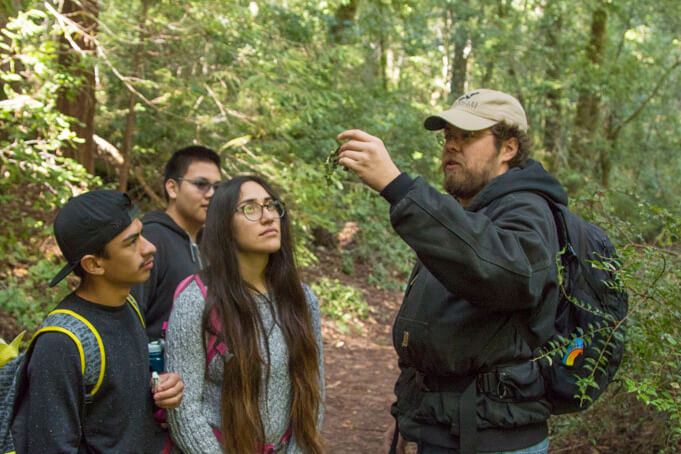
Chris Soriano leading a WOLF school field trip in Big Basin pre-CZU fire, by Mike Kahn
Here are a few of the programs and resources Santa Cruz Museum of Natural History offers along with some of Felicia and Chris’ insights:
Elementary School - Ages 5-11
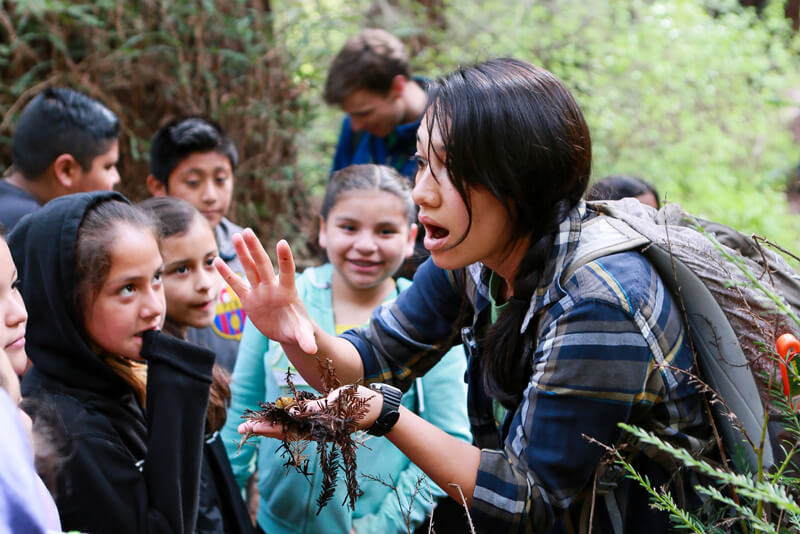
Felicia Van Stolk on a 4th grade Nature Rangers field trip, by Santa Cruz Museum of Natural History
Mounting research shows that finding a connection with nature during childhood leads to a lifelong dedication to environmental stewardship. Felicia agrees and emphasizes, “outdoor education is an incredibly important opportunity for children to connect their classroom learning in a real, physical way.” With that in mind, Nature Explorers Camp offers week-long camps focused on themes like archaeology, botany and geology for children from ages 5 through 11 during summer, winter and spring school breaks. Chris says students have been heard to scream excitedly, “this is better than the [Santa Cruz Beach] Boardwalk!” With reviews of an educational experience outcompeting the iconic amusement park that boasts games and rides, it's no surprise the camps fill up incredibly fast. Chris says they were able to expand the camps this summer to include more than 100 kids and they offer scholarships to help to make them accessible for more elementary school aged students.
Middle School - 6th-8th Grade
The museum’s newest program, Nature Club, offers hikes for 6th through 8th grade students led by museum staff experts who help students learn about the habitats around them through observation, experience, and social emotional learning and activities. The hikes, which are from 10 am to 12:30 pm the first Saturday of each month, rotate through different local habitats such as Neary Lagoon, Moore Creek, and the tidepools at Natural Bridges State Beach. Chris says Nature Club has been popular because it's not only a natural next step for Nature Explorers Camp alumni moving into middle school, but it's also especially valuable for young teens to connect with peers around a shared interest, and there aren’t a lot of other nature programs for students their age. “When kids can see their lessons from school expand while spending time outside, with friends, and an expert co-explorer guide—it's such a rich and unique experience,” Felica said. Each hike has a maximum number of participants so be sure to check for dates and scholarship opportunities as they become available.
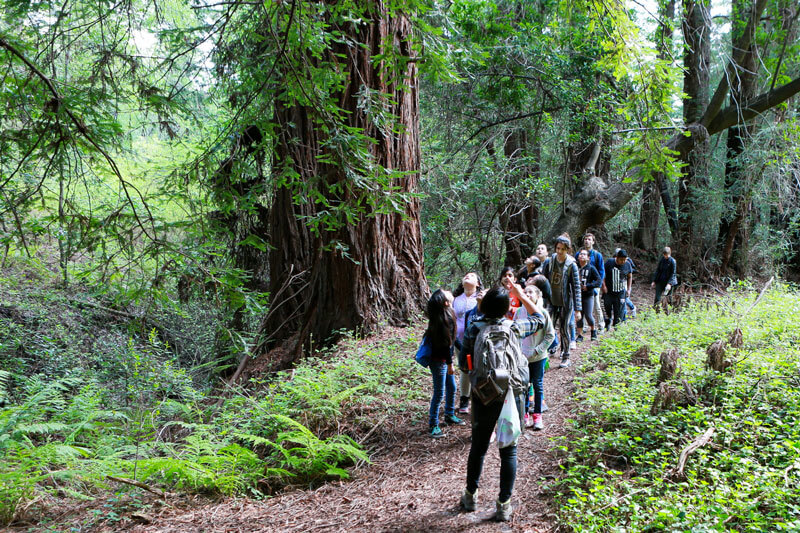
Felicia leading a hike in the redwoods, by Santa Cruz Museum of Natural History
High School - 9th-12th Grade
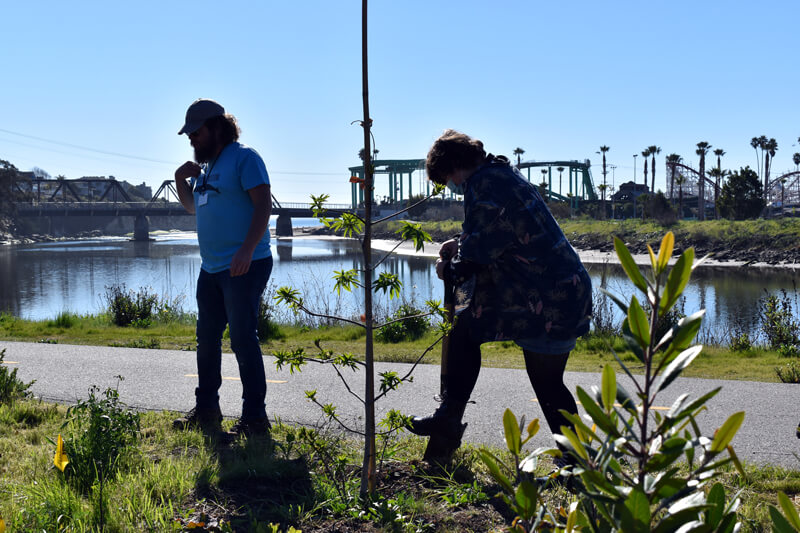
Chris and Earth Stewards planting along the San Lorenzo River, by Santa Cruz Museum of Natural History
An incredibly impactful program at just five years old, Chris says the Earth Stewards Project has already helped connect more than 100 high school students—even with pandemic closures— to nature by engaging in immersive outdoor service learning projects that teach STEM subjects, nurture an appreciation for nature, leave a positive environmental impact, build vocational skills, and cultivate the next generation of environmental stewards. Each week, students learn about subjects like native plant and animal species, the unique habitats that can be found in Santa Cruz County, and natural processes like wildfire regimes and succession and then get to apply the knowledge with a hands-on project—utilizing tools and identifying plants—developing valuable skills and experience for careers in stewardship, the outdoors, and beyond. “The students just last year removed literal tons of invasive species of plants and planted several hundred of our native species in critical habitats that need our support,” Chris shared. “I love seeing the students thriving in the outdoors, learning new things about nature, and seeing them grow deeper connections to nature and their role as caretakers of it,” he continued. Currently, the Earth Stewards Project is coordinated directly with participating schools so students receive credits and transportation for the program through their schools, however expanding the program to more participants is a long term goal. Interested teachers can contact the museum.
“The students just last year removed literal tons of invasive species of plants and planted several hundred of our native species in critical habitats that need our support”
— Chris Soriano, Education Coordinator, Santa Cruz Museum of Natural History
All Ages
With the goal of inspiring stewardship in the whole community, offering a plethora of content to connect people of all ages with the wondrous world of nature in the diverse habitats that transition from the crest of the mountain tops to below the crests of the ocean waves is a must and the Santa Cruz Museum of Natural History does not disappoint. When pandemic restrictions prevented the community from visiting the museum, staff pivoted to bring the museum to the community. One of the fantastic results of those efforts was the creation of the digital collection Museum At Your Side which is a veritable treasure trove of articles, some 50 videos, and handfuls of hands-on activities which allow people of all ages and abilities to connect with nature wherever they are. Committed to the access remote resources provided to all, virtual exhibits combining text, video, slideshows, and learning extensions allow everyone to bring the Museum’s physical exhibits to life right through their screens.
Now that the museum is able to welcome in-person visitors once more, community events like nature journaling and crafts celebrating biodiversity abound. A great introduction to for those who haven't yet visited the museum yet but might be intrigued by a quirky party in a cool setting is the museum’s Halloween celebration, Museum of the Macabre—a favorite of Felicia’s because people drawn by the costumes and festivities often find something in an exhibit or display that intrigues them and helps them find their own unique connection to nature. The Museum of the Macabre was their first foray into evening social events at the museum and their success quickly expanded to monthly events. The first Friday of every month, museum admission is waived and the community is invited to “nerd out on your night out” with the First Fridays After Hours events to learn about hot topics like fire and cool subjects like maritime mysteries and monsters, complimented by special outdoor festivities that often include activities and food and beverages for purchase. And there are monthly opportunities for volunteers of all ages to learn about stewardship while making an impact through programs like Saturdays in the Soil and Beach Clean Ups.
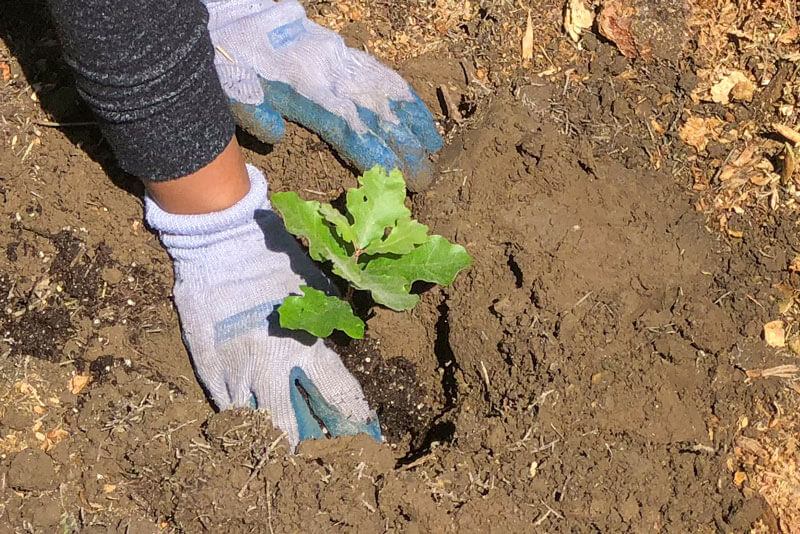
Adults
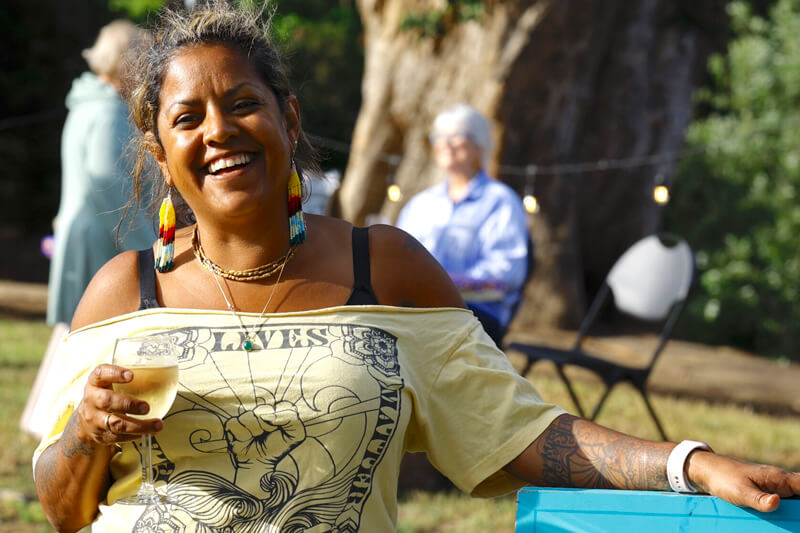
First Friday After Hours festivities, by Santa Cruz Museum of Natural History
While nearly all of the museum’s content is appropriate for consumption by people of all ages, there are some delectable delights reserved for adults such as their Curated Cocktails article complete with recipes and opportunities to purchase drinks at the First Fridays After Hours festivities often include adult beverages as well. Libations aside, the museum also offers invaluable resources for educators such as field trips, lesson plans, and kits with specimens and curricula that can be rented. Field trips, for which the museum is accepting applications from educators, like the 4th grade Nature Rangers provide “phenomenon based learning” in environments like a redwood forest where there are no shortage of subjects to delve into—like history, ecology, and biological adaptations—happening right before your very eyes Felicia said. However, one of the most sought after resources they offer is the Educator Workshop with the Amah Mutsun which allows teachers to work with tribal leaders and scholars on ways to incorporate a native perspective into K-12 curriculum. Not surprisingly, these incredibly valuable and popular workshops reach capacity quickly but future dates and waitlist opportunities can be found on the website. The First Peoples program, updated with tribal consultants, is another great opportunity to bring the most current knowledge of Indigenous culture, history, and connection to nature to Kindergarten through 4th grade students with resources and field trip opportunities.
“I believe all humans have a nature connection, it's just about finding what it is and growing it”
— Felicia Van Stolk, Executive Director, Santa Cruz Museum of Natural History
Plan Your Visit
When possible, visiting the Santa Cruz Museum of Natural History above Seabright Beach in person to take in its curated and interactive exhibits highlighting diverse plant, animal and human communities from the shorelines to summits of the Santa Cruz mountains is highly recommended. Admissions range from $2-$4 for adults and youth are always free. But admissions are free for all the first Friday of every month. Accessibility information for the museum can be found here.
We hope you find the Santa Cruz Museum of Natural History resources helpful to find and grow your connection with the diverse natural habitats of the Santa Cruz mountains which will need stewards like you and the generations to come for the climate challenges that lie ahead.
More to Explore
- Learn more about redwoods forests and the plants and wildlife they support
- Read our favorite Redwood Facts and take a climb through an illustrated redwood
- Read more about connecting youth to nature at Camp Jones Gulch

